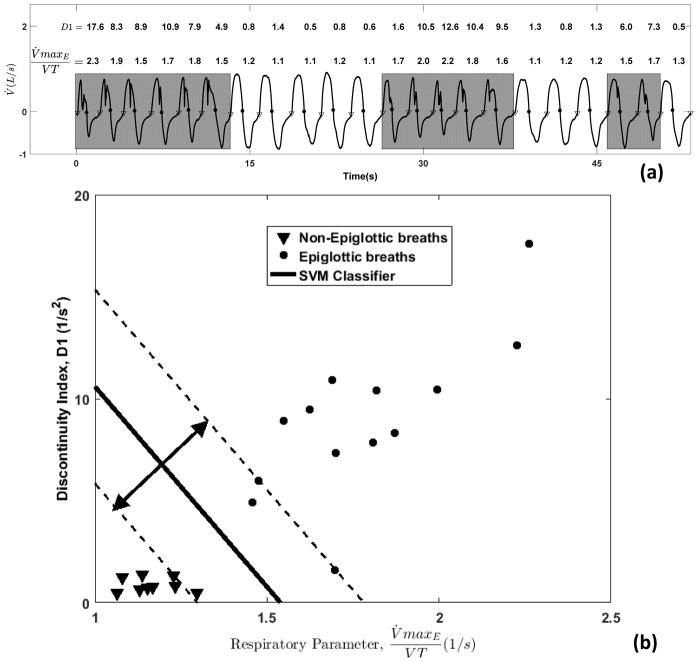Figure 1.
In this simplified example classification scheme (support vector machine), we take 22 breaths, 13 of which have epiglottic collapse. a) Two characteristics (features) are highlighted, the discontinuity index (D1) and respiratory parameter ( : the ratio of peak expiratory flow and tidal volume), and overlaid on the flow trace. b) Plot of characteristics for breaths with epiglottic collapse (circles) versus without epiglottic collapse (triangles). The classifier finds a linear boundary between groups that maximizes the margin of error (arrows, dashed lines).

